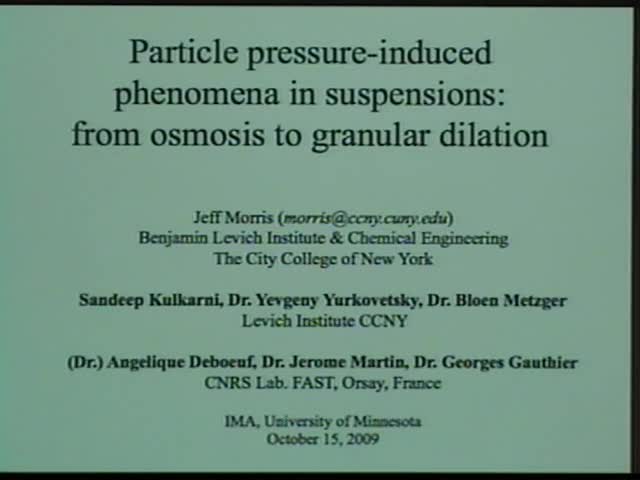Particle pressure-induced phenomena in suspensions: from osmosis to granular dilation
Presenter
October 15, 2009
Keywords:
- Suspensions
MSC:
- 55P40
Abstract
The coupling of microstructure to bulk flow behavior is a hallmark of non-Newtonian flows in general. When the non-Newtonian fluid is a two-phase material where the dispersed and continuous phases may readily segregate, this coupling is found to result in quite striking migration of particles and fluid, with significant impact on the flow structure as a consequence. In this talk, we first describe a general approach to understanding the migration phenomena based on particle pressure, the nonequilibrium continuation of osmotic pressure to sheared dispersions of solids (here in Newtonian liquids only), considering the microstructural origins of the behavior, its the macroscopic consequences, and how particle pressure may be measured. This will be followed by a consideration of the flow through a channel contraction of a very concentrated suspension – near and at the jamming limit of about up to 58% solids for the system studied experimentally, so that hydrodynamic and contact forces both play a role. In the contraction geometry, the effluent generally has a lower solid fraction than the upstream suspension, a phenomenon known as self-filtration, and we will show that self-filtration may be described by a mechanism where liquid flow is driven by variation of the particle pressure within the geometry.
